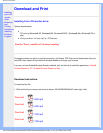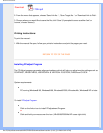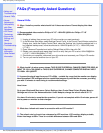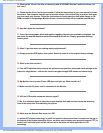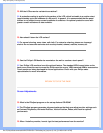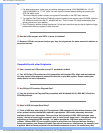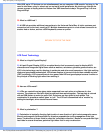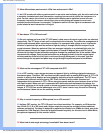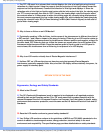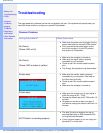
FAQs (Frequently Asked Questions)
Q: What are the .inf and .icm files on the set-up disk & CD-ROM? How do I install the drivers (.inf
and .icm)?
A: These are the driver files for your monitor. Follow the instructions in your user manual to install
the drivers. You computer may ask you for monitor drivers (.inf and Icm files) or a driver disk when
you first install your monitor. Follow the instructions to insert the driver disk (either floppy or CD-
ROM) included in this package. Monitor drivers (.inf and Icm files) will be installed automatically.
Q: How do I adjust the resolution?
A: Your video card/graphic driver and monitor together determine the available resolutions. You
can select the desired resolution under Windows® 95/98 with the 'Display properties/Settings'
control panel.
Q: What if I get lost when I am making monitor adjustments?
A: Simply press the OSD button, then select 'Reset' to recall all of the original factory settings.
Q: What is the Auto function?
A: The AUTO adjustment key restores the optimal screen position, phase and clock settings at the
press of a single button – without the need to navigate through OSD menus and control keys.
Q: My Monitor has no power (Power LED does not light up). What should I do?
A: Make sure the AC power cord is connected to the Monitor.
Q: Will the LCD monitor accept an Interlace signal?
A: No. If an Interlace signal is used, the screen displays both odd and even horizontal scanning
lines at the same time, thus distorting the picture.
Q: What does the Refresh Rate mean for LCD?
A: Unlike CRT display technology, in which the speed of the electron beam is swept from the top to
the bottom of the screen determines flicker, an active matrix display uses an active element (TFT) to
control each individual pixel and the refresh rate is therefore not really applicable to LCD
technology.
file:///D|/My%20documents/dfu/B2C/ENGLISH/170X4/safety/saf_faq.htm (2 of 8) [3/1/2004 6:02:19 PM]







